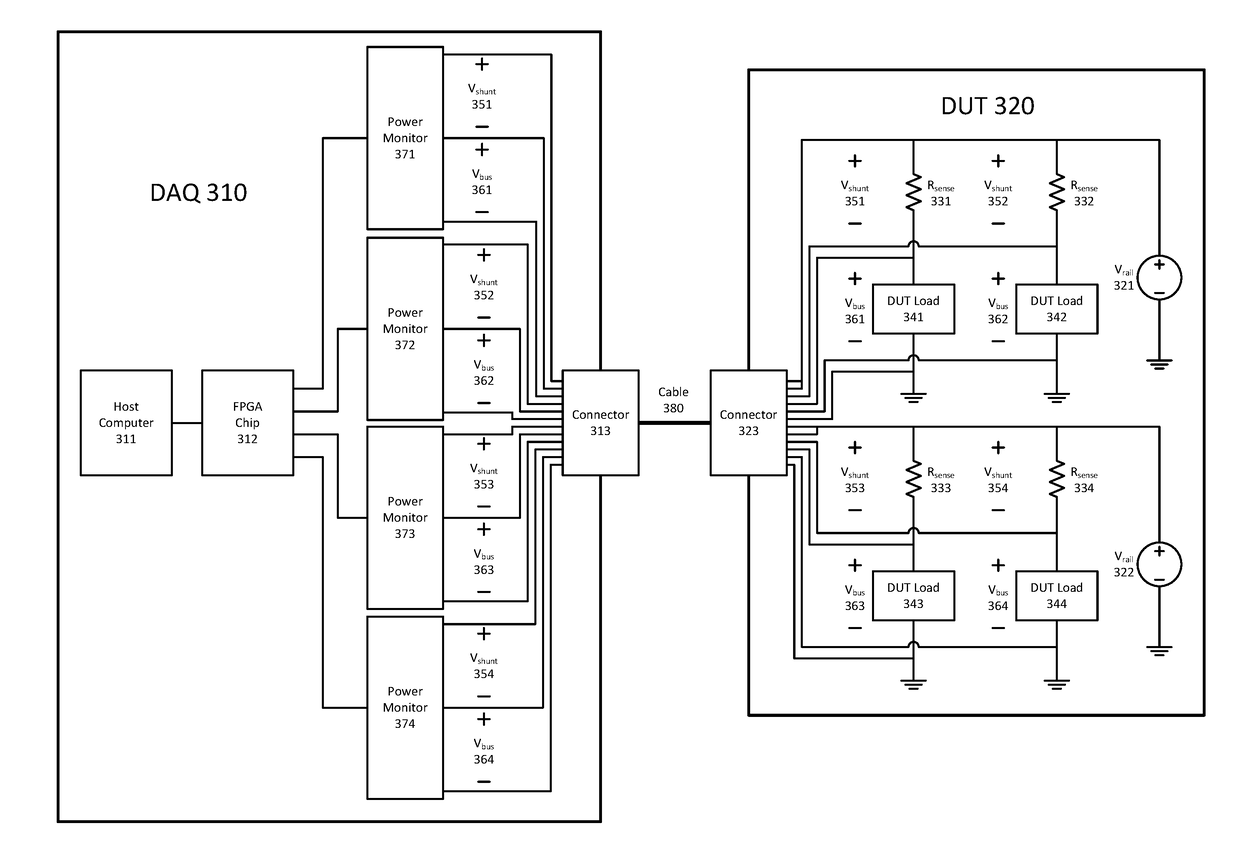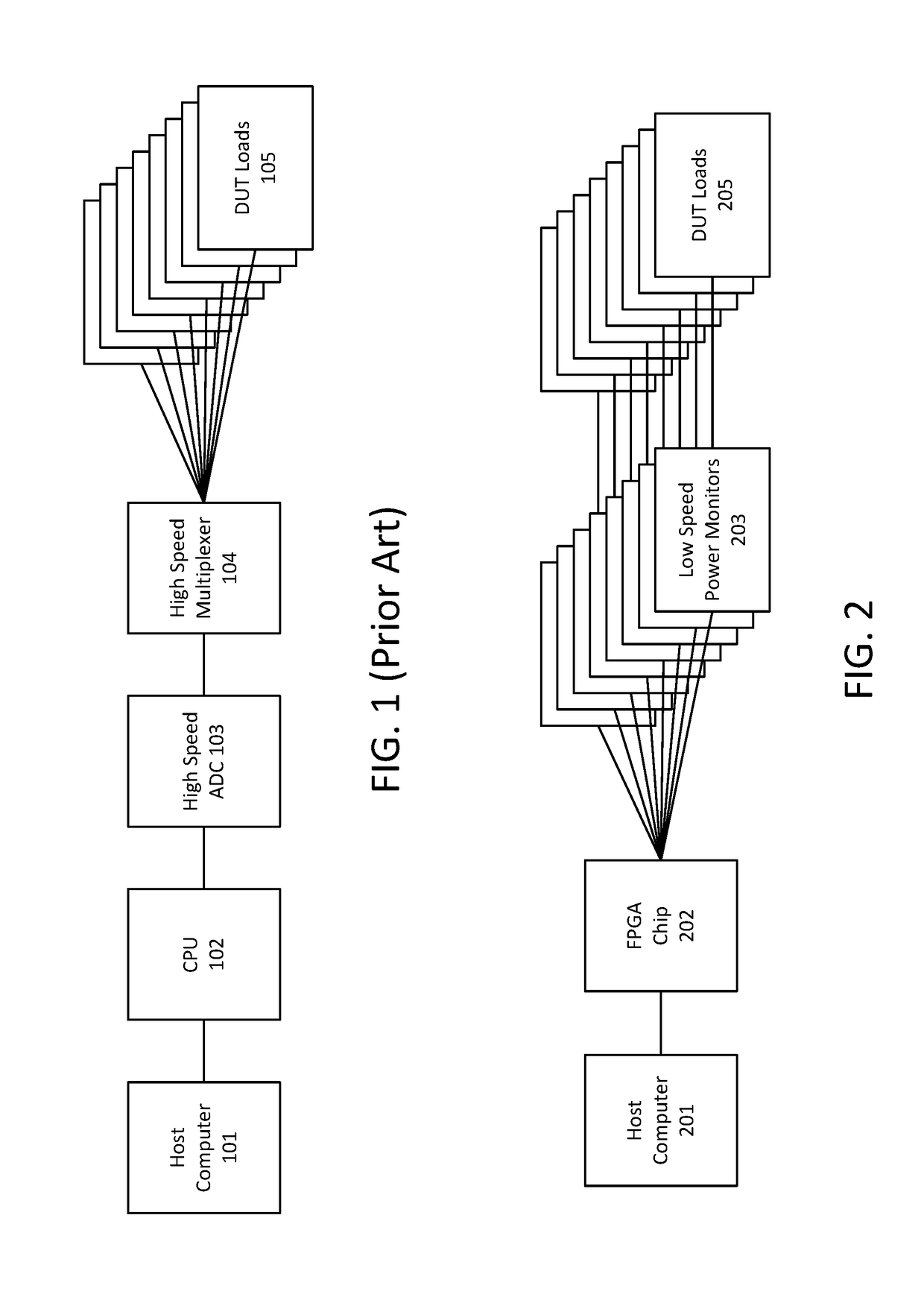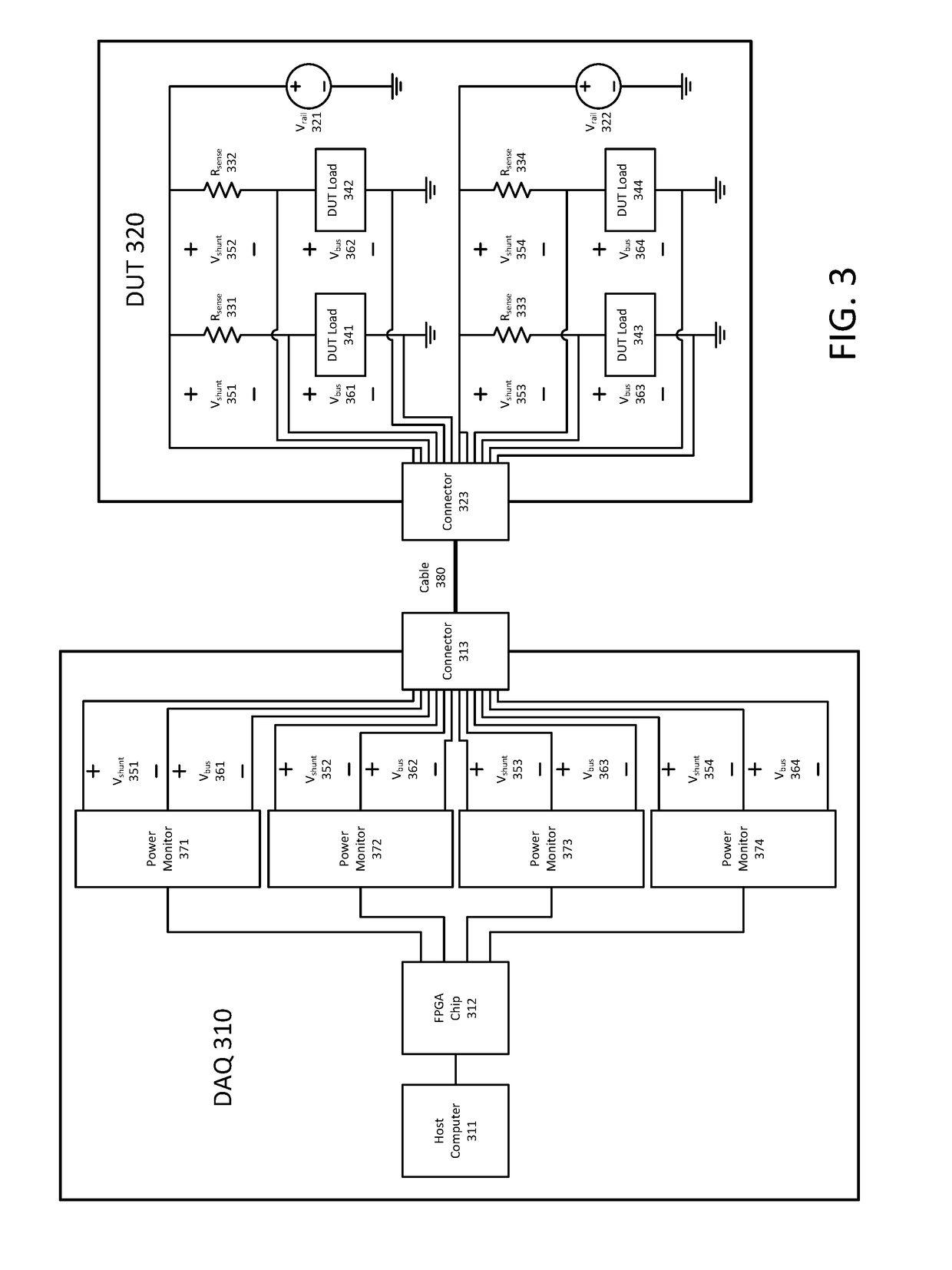System and method for parallel power monitoring
a technology of parallel power monitoring and monitoring system, applied in the field of parallel power monitoring system and method, can solve the problems of increasing setup times, reducing the size of the battery, and small development team only having enough resources to obtain one or two daqs, so as to achieve high accuracy and cost efficiency. the effect of cost saving
- Summary
- Abstract
- Description
- Claims
- Application Information
AI Technical Summary
Benefits of technology
Problems solved by technology
Method used
Image
Examples
Embodiment Construction
[0017]Aspects, features and advantages of the disclosure will be appreciated when considered with reference to the following description of embodiments and accompanying figures. The same reference numbers in different drawings may identify the same or similar elements. Furthermore, the following description is not limiting; the scope of the present technology is defined by the appended claims and equivalents. For example, while certain processes may be shown in the figures as occurring in a linear fashion, this is not a requirement unless expressly stated herein. Different processes may be performed in a different order or concurrently. Steps may also be added or omitted unless otherwise stated.
[0018]FIG. 1 illustrates a conventional system for gathering power consumption data for a DUT with multiple subsystems of interest (e.g., DUT loads 105). DAQs may typically contain between one and four high speed analogue-to-digital converters (“ADCs”) and one very high speed multiplexer. As ...
PUM
 Login to View More
Login to View More Abstract
Description
Claims
Application Information
 Login to View More
Login to View More - R&D
- Intellectual Property
- Life Sciences
- Materials
- Tech Scout
- Unparalleled Data Quality
- Higher Quality Content
- 60% Fewer Hallucinations
Browse by: Latest US Patents, China's latest patents, Technical Efficacy Thesaurus, Application Domain, Technology Topic, Popular Technical Reports.
© 2025 PatSnap. All rights reserved.Legal|Privacy policy|Modern Slavery Act Transparency Statement|Sitemap|About US| Contact US: help@patsnap.com



